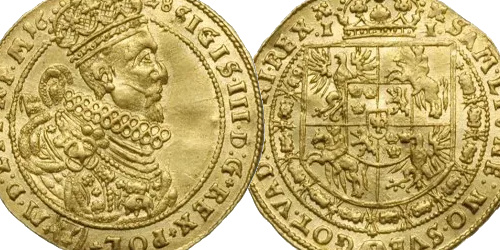A rarer seven-figure variety.
A nice, relatively fresh piece with natural print shine.
Banknote in PMG grading with a PMG 35 grade.
Definitely above average, especially for such a rare variety.
In August 1915, the General Government of Warsaw was established in the part of the Russian Empire occupied by the German army. On November 5, 1916, the Governor-Generals of both occupation zones issued the November 5 Act. By decree of December 9, 1916, the German occupation authorities established an issuing institution, the Polish National Loan Fund, which opened on April 26, 1917.
The PKKP was the issuer of the Polish mark divided into one hundred fenigs, whose rate was equalized with the German mark. Iron phenig coins and paper Polish marks were introduced into circulation. The Polish Republic, reborn in 1918, initially did not even have a substitute for its own treasury, so the Polish mark was recognized as a currency.
The reborn Polish state took over and polonized the PKKP. The stock of Polish marks printed in Berlin, inherited from the General Government of Warsaw, was allowed into circulation in its entirety.
Polish marks were put into circulation on April 26, 1917, with a guarantee of repayment up to one billion German marks. The Germans prepared two issues of paper money. The first, commonly called "jeneral" by collectors, consisted of six denominations that had syntax errors. Therefore, a second issue was prepared with corrected inscriptions and three denominations were added: 5, 10 and 1,000 Polish marks. These banknotes, called "general" by collectors, were put into circulation between July and November 1917, except for the highest denomination which hit the market in January 1918.












